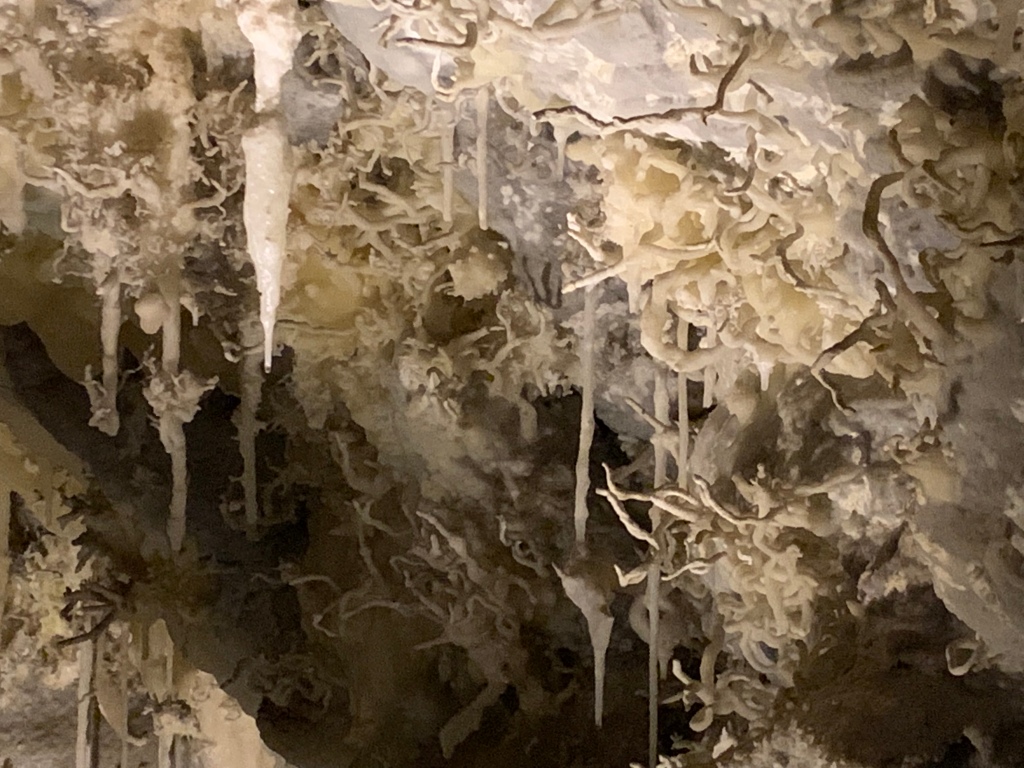
The dome in the middle reminded folks of the US Capitol, but the geologic speciality of the park is the reef, or Waterpocket Fold, one of the longest continually exposed monoclines (like a wrinkle) in the world, almost 100 miles north to south. Cathedral Valley in the north and Muley Twist Canyon in the south are difficult to access without a high clearance 4×4, but the geologic layers can all be seen in the middle cross section near the Fruita orchard. The Hickman Bridge trail above is a good place to see the dome, but the scenic drive along the fold is exceptional. The unpaved side trip into Capitol Gorge is particularly striking, and there’s a hike from the parking lot up to see the eroded round water-pockets for which the fold is named.
This is a great park to learn about the geology of the west, from the high country mountains like Great Basin and Rocky at 12,000 feet, to the high plateaus like Cedar Breaks at 10,000 feet and Bryce at 8,000 feet, to standing up country with Natural Bridges at 6,000 feet, Arches at 5,000 feet, Zion at 4,000 feet and the many layered Grand Canyon spanning from 8,000 to 2,000 feet, and all the way down to the low desert of Death Valley more than 250 feet below sea level. Here, the ranger’s geology talk explained how the changing climate and continental shifts over hundreds of millions of years left repeated layers of deposits, lifted them up unevenly and eroded them into the wonderful scenery we see today. The same patterns repeat, not just one ancient inland sea or forest or swamp or grassland or desert, but many repeated environments were slathered over one another and pressed into rock.
Why are there weird discolored greenish mounds along the Green River? Those were from one of the swampy periods (Morrison) when oxygen was low, materials were soft and clay-like and they contain late Jurassic dinosaur fossils. Why are there similar colored layers at much different altitudes? They were from different swampy periods and contain different fossils. What causes the alternating pink and beige layers of hoodoos and other rock formations? The layers are made of the same kind of rock, but in some years the iron oxidized and in others it couldn’t due to water changes. Where did all the sand come from to make all the sandstone layers? Much of the sand eroded from the old Appalachian Mountains, flowed down ancient rivers and blew across to the west.
Even if you’re completely uninterested in Geology, you might be interested in the outlaws who hid in the remote areas nearby, like the Wild Bunch, which included Butch Cassidy & the Sundance Kid. Or maybe tour the old orchard and learn about pioneers. Or take a moment to think of those Uranium miners, many Native Americans, who still suffer radiation poisoning, or think about the wildlife who can’t read the warning signs. This is an uncrowded and under appreciated national park. Highly recommended.





